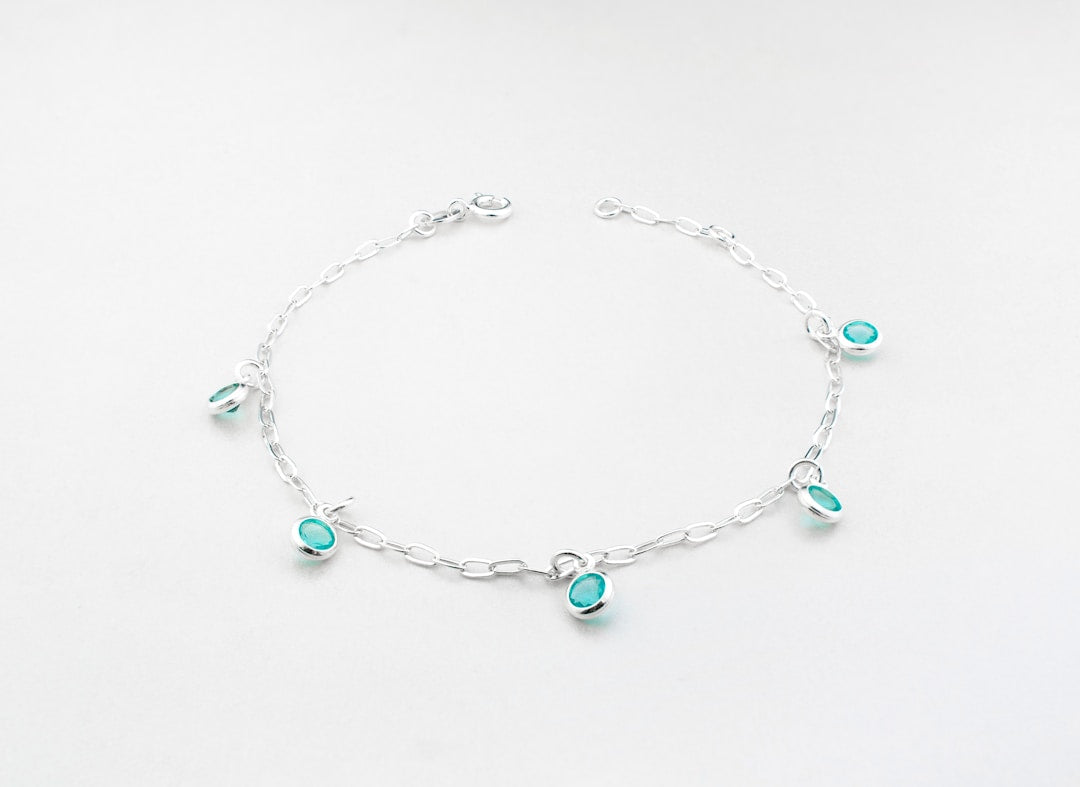Why Cleaning Your Brass Jewelry is Essential
Brass jewelry offers a unique, warm golden hue that adds a distinct touch of vintage-inspired style to any man's look. From bold brass necklaces to statement rings, it's a versatile and relatively affordable metal. However, like many metals, brass is susceptible to tarnishing over time. This natural process occurs when the copper component in brass reacts with oxygen, moisture, skin oils, and chemicals in the environment, leading to a dull, darkened, or even greenish patina. While some appreciate this aged look, most prefer their accessories to maintain their original luster. Regularly learning how and when to clean brass jewelry is key to preserving its appearance and longevity. Neglecting this can lead to stubborn tarnish that's much harder to remove later.
Understanding why cleaning brass jewelry matters goes beyond just aesthetics. Built-up grime and tarnish can sometimes cause skin discoloration (though typically harmless) and, in rare cases, minor irritation for those with very sensitive skin. Keeping your pieces clean ensures they remain comfortable and stylish wear after wear. This guide will walk you through the best methods to effectively clean brass jewelry, restoring its shine and ensuring your favorite pieces always look their best.
Understanding Brass and Tarnish
Before diving into cleaning methods, it helps to understand what brass is and why it tarnishes. Brass is an alloy, primarily composed of copper and zinc. The exact ratio can vary, influencing its color and properties. It's the copper content that is mainly responsible for tarnishing. Exposure to air (oxidation), sweat, lotions, perfumes, humidity, and even certain foods can accelerate this process. You might notice your brass pieces darkening or developing green spots (verdigris). This is a normal reaction, explained further in articles discussing if brass tarnishes. The good news is that tarnish on brass is usually superficial and can be removed with proper cleaning techniques.
Methods to Clean Brass Jewelry Safely and Effectively
There isn't a single "best" way to clean brass jewelry; the ideal method depends on the level of tarnish and the materials you have available. Always start with the gentlest method first.
Method 1: Simple Soap and Water (For Light Cleaning & Regular Maintenance)
For routine cleaning or very light tarnish, warm water and mild dish soap are often sufficient. This is the least abrasive option and should be your first step.
- Fill a small bowl with warm water.
- Add a few drops of mild liquid dish soap (avoid harsh detergents).
- Submerge your brass jewelry in the soapy water for 5-10 minutes.
- Use a soft cloth or a very soft-bristled toothbrush (like a baby toothbrush) to gently scrub away dirt and oils. Pay attention to crevices and details.
- Rinse the jewelry thoroughly under cool running water, ensuring all soap residue is removed. Soap left behind can contribute to dullness.
- Dry the piece completely with a soft, lint-free cloth. Proper drying is crucial to prevent water spots and further tarnishing.
This gentle approach is perfect for weekly or bi-weekly upkeep of your favorite men's brass jewelry pieces.
Method 2: Natural DIY Brass Cleaners (For Moderate Tarnish)
If soap and water aren't cutting it, several household staples can effectively tackle moderate tarnish. These natural methods leverage mild acids to dissolve the tarnish.
Option A: Lemon Juice & Baking Soda Paste
- Squeeze the juice of half a lemon into a small bowl.
- Add baking soda gradually, stirring until you form a paste (it will fizz initially).
- Apply the paste directly onto the tarnished areas of the brass jewelry using a soft cloth or your fingers.
- Let the paste sit for 10-15 minutes for mild tarnish, or up to 30 minutes for heavier buildup.
- Gently rub the paste over the surface with the cloth or a soft toothbrush. You should see the tarnish lifting.
- Rinse thoroughly under warm water, making sure all paste residue is gone.
- Dry completely with a soft cloth.
Option B: Vinegar, Salt, and Flour Paste
- In a bowl, mix equal parts salt and flour.
- Add white vinegar slowly, stirring until you achieve a thick paste consistency.
- Apply this paste generously over the tarnished brass.
- Allow the paste to sit for 15-60 minutes, depending on the severity of the tarnish.
- Rub gently with a soft cloth. The mild abrasiveness of the salt and flour helps lift the tarnish loosened by the vinegar's acidity.
- Rinse thoroughly with warm water.
- Dry completely with a soft, lint-free cloth.
Option C: Ketchup or Tomato Paste
It sounds strange, but the mild acids in tomatoes work wonders on brass tarnish!
- Apply a thin layer of ketchup or tomato paste directly onto the brass jewelry.
- Let it sit for 30-60 minutes.
- Use a soft cloth or soft toothbrush to gently scrub the surface.
- Rinse thoroughly under warm water.
- Dry completely with a soft cloth. This method is surprisingly effective for those looking for an easy way to clean brass jewelry using common kitchen items.
Method 3: Commercial Brass Cleaners (For Heavy Tarnish)
For very stubborn tarnish that doesn't respond to DIY methods, a commercial brass polish or cleaner might be necessary. These products are specifically formulated to remove oxidation from brass.
- Choose Wisely: Select a cleaner specifically designed for brass. Read the label carefully. Some are highly abrasive and not suitable for delicate or plated items (always ensure your jewelry is solid brass).
- Follow Instructions: Always follow the manufacturer's instructions precisely regarding application, wait time, and removal.
- Ventilation: Use commercial cleaners in a well-ventilated area, as they often contain chemicals with strong odors.
- Patch Test: If possible, test the cleaner on an inconspicuous area of the jewelry first to ensure it doesn't cause discoloration or damage.
- Application: Typically, you'll apply a small amount to a soft cloth and rub it onto the brass surface.
- Rinse & Dry: Most commercial cleaners require thorough rinsing and drying after use. Check the product instructions.
While effective, use commercial cleaners sparingly as frequent use of harsher chemicals isn't ideal for the long-term health of your jewelry.
The Crucial Steps After Cleaning: Rinsing, Drying, and Polishing
No matter which method you use to clean brass jewelry, the steps following the cleaning agent application are vital.
- Thorough Rinsing: Always rinse your jewelry completely under clean water (preferably distilled water if your tap water is very hard) to remove any residue from soap, paste, or commercial cleaners. Leftover residue can accelerate retarnishing or cause dull spots.
- Complete Drying: This is non-negotiable. Moisture is a primary enemy of brass. Use a soft, absorbent, lint-free cloth (microfiber cloths work well) to dry the piece meticulously. Pay extra attention to nooks, crannies, and any detailed areas where water might hide. You can even use a hairdryer on a cool, low setting for intricate pieces, but be cautious not to overheat the metal.
- Polishing for Shine: After drying, use a separate clean, dry microfiber or jewelry polishing cloth to buff the brass. This final step enhances the shine and removes any lingering water spots. Gentle, circular motions work best. Understanding why polishing is important helps maintain that brilliant finish.
Preventing Tarnish: Keeping Your Brass Jewelry Cleaner for Longer
While cleaning removes tarnish, prevention is always better. Here’s how to minimize how often you need to clean brass jewelry:
- Store Properly: Keep your brass pieces in a cool, dry place. Store them individually in small airtight plastic bags or soft pouches to minimize exposure to air and prevent scratching. Anti-tarnish strips can also be added to storage containers.
- Avoid Moisture & Chemicals: Remove brass jewelry before showering, swimming (chlorine is harsh!), washing dishes, or exercising (sweat accelerates tarnish). Apply lotions, perfumes, hairsprays, and colognes *before* putting on your jewelry, allowing them to dry completely first.
- Wipe After Wear: After taking off your brass jewelry, give it a quick wipe with a soft cloth to remove skin oils and moisture accumulated during the day.
- Consider Lacquer (Use with Caution): Some brass jewelry comes pre-lacquered, which provides a protective barrier. You can also apply clear jewelry lacquer yourself, but be aware this can alter the feel and sometimes the look of the piece, and it may wear off unevenly over time, requiring stripping and reapplication. It's generally recommended to embrace the natural metal and clean as needed unless you specifically desire a lacquered finish.
How Often Should You Clean Brass Jewelry?
The frequency depends on several factors: how often you wear the piece, your body chemistry, the climate you live in (humidity plays a big role), and how you store it.
- Regular Wear: If you wear a piece daily, a quick wipe-down after each use and a gentle soap-and-water cleaning every 1-2 weeks is a good routine.
- Occasional Wear: For pieces worn less frequently, cleaning might only be needed every few months or when you notice visible tarnishing.
- Visible Tarnish: Regardless of schedule, if you see significant dullness or discoloration, it's time to clean your brass jewelry using one of the methods described above.
By incorporating these cleaning and prevention tips into your routine, you can ensure your brass jewelry remains a shining testament to your personal style for years to come. Maintaining its luster is straightforward and rewarding, keeping your accessories looking as sharp as the day you got them.

